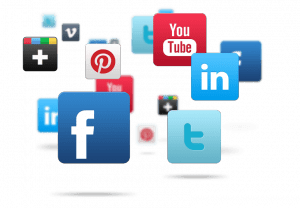 In 2014, it’s all about you. But what you may not realize is that search engines and social media companies have actually been making it all about you for years now, as Google started creating unique, personalized search results back in 2008.
In 2014, it’s all about you. But what you may not realize is that search engines and social media companies have actually been making it all about you for years now, as Google started creating unique, personalized search results back in 2008.
So here we are in 2014 with plenty of questions still to be answered. How sophisticated have these platforms become? As a marketer, if every newsfeed, search result or profile page on social media is personalized to the end user, are my client’s messages making it through? How do social media networks pick which messages to display?
Or maybe you’re thinking, “Wait, does this mean that not all of my Twitter followers/Facebook fans are seeing my posts?” Actually, yes, that’s exactly what it means. In some instances, none of your followers are seeing the post you just uploaded to your Facebook page.
This is the first, in a series of blog posts, that will hopefully help you answer those questions, as well as give you a course of action to make sure that you or your client’s messages are being seen in the personalized world of social media.
I’ll provide an overview of how each social media platform personalizes to you. Keep in mind though, that each of these companies has smart machines and artificial intelligence staff on board to improve their “secret sauce.” So while you may know some of the levers to pull to help give your messaging a bit of a boost, nothing is as powerful as creating content that you know will resonate with your target audience, mainly because you’ve evaluated the data about who they are and what they like to read and share.
Up first: Facebook
If you have an account, then you already have an idea of how Facebook is personalized to you. Just think about all the options that you filled out when creating your profile.
Additionally, you might have given Facebook even more data about yourself when filling out your page’s required prompts. Facebook can see who you are connected to, why you are connected with certain groups (work, school, etc) and what type of content you have a tendency to click on more than others.
In December 2013, Facebook took their personalization work one step further by hiring Yann LeCun, a computer science researcher with contributions in machine learning, computer vision, mobile robotics and computational neuroscience, to head its Artificial Intelligence division. (You’ve seen his work if you’ve used an ATM that can read your checks.)
He is leading a team that is using unsupervised learning models to let computers function like a brain. This is very similar to Google’s work where they taught a computer to recognize a cat.
Here are LeCun’s comments from a Wired interview he conducted about how he’s going to use artificial intelligence at Facebook:
How do we really understand natural language, for example? How do we build models for users, so that the content that is being shown to the user includes things that they are likely to be interested in, or that are likely to help them achieve their goals, whatever those goals are, or that are likely to save them time, or intrigue them, or whatever. That’s really the core of Facebook. It’s currently to the point where a lot of machine learning is already used on the site — where we decide what news to show people and, on the other side of things, which ads to display.
This deep learning effort is focused on reducing the 1,500 updates an individual user could see on their newsfeed, down to 30-60 that are the most relevant to them.
So what does all this mean to you as a marketer?
1. First of all, you need to know your target audience very well. Dig into all the data you have and craft content that will appeal to your followers. Make sure to post when they are online, information that can be found via your page’s Facebook Insights.
2. Make sure your website has Facebook’s follow and “Like” buttons are visible on your website. You can get these buttons from Facebook’s developer site, as they monitor this data as well.
3. With organic reach for brand pages nearing just 1%, it’s time to directly use Facebook’s data mining services and start running Facebook ads to target your page’s followers and extend your brand’s reach.
4. Review your page’s Insights data regularly and readjust accordingly.
By understanding and properly using the four tips above, you can position your brand’s Facebook page to be seen and engaged with more.
See what’s next in our Social Media Personalization series by clicking here to read about Twitter.


